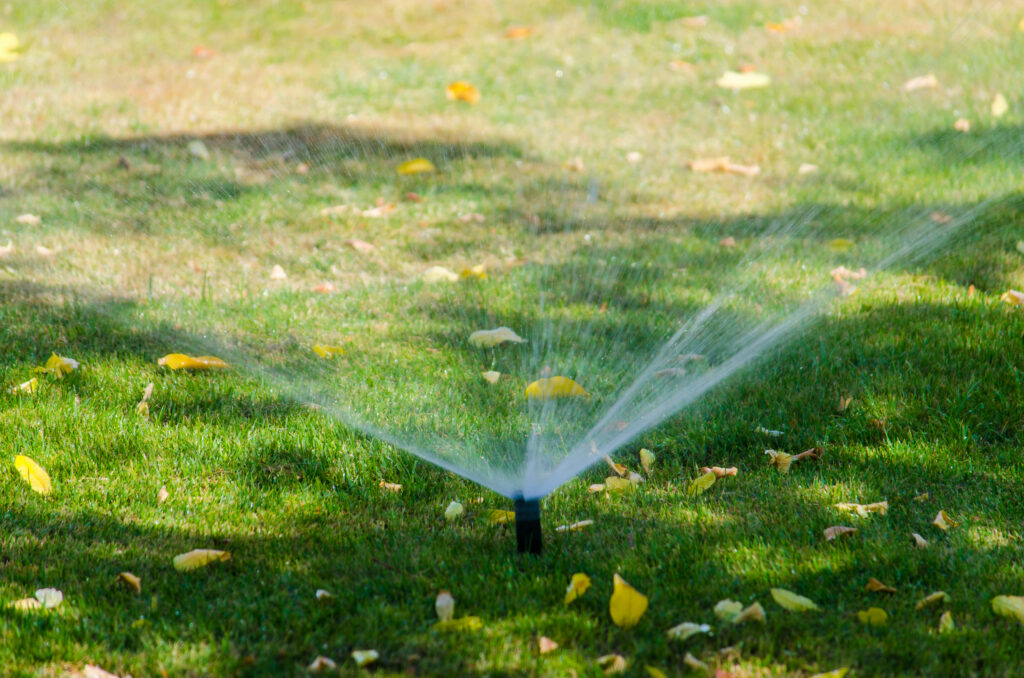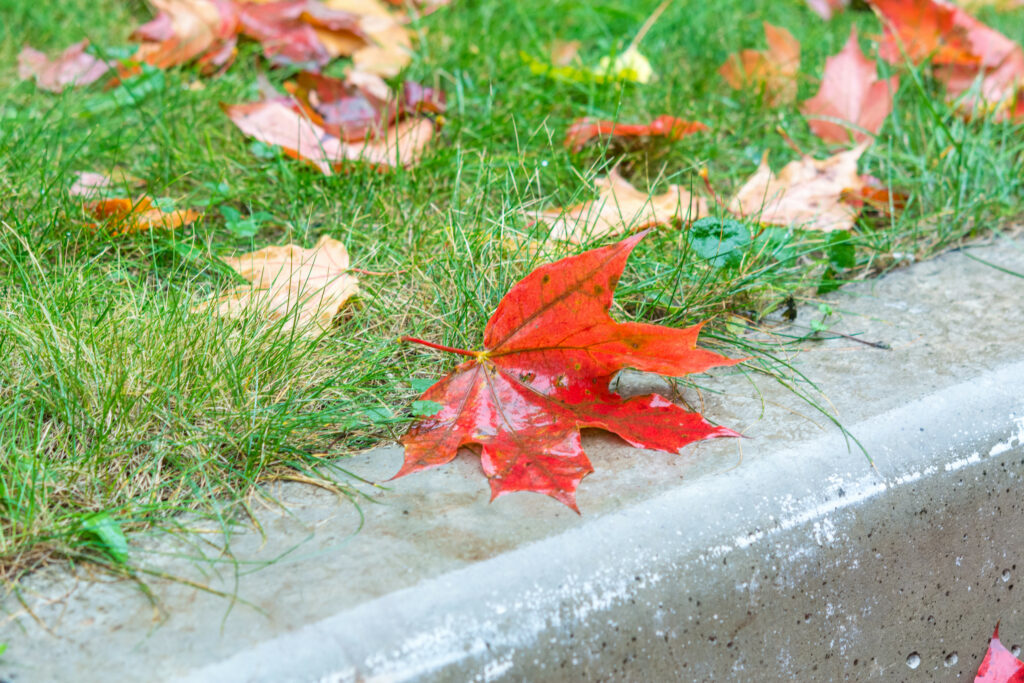As summer winds down, many homeowners start wondering whether it’s finally time to give the sprinklers a break. After all, the weather is cooler, the days are shorter, and the brutal Texas heat is (hopefully) behind us. So—should you water your lawn in the fall?
The short answer: Yes, but not as much as you did in summer. Fall watering plays an essential role in keeping your lawn healthy, green, and strong all year long.
Why Fall Watering Still Matters
Even though temperatures drop, your grass doesn’t go dormant right away. In fact, fall is a major recovery season for warm-season grasses like Bermuda and St. Augustine.
During the cooler months, lawns are busy:
- Repairing damage from summer heat
- Growing deeper, stronger roots
- Preparing for winter dormancy
If your soil dries out during this period, your lawn enters winter weak, stressed, and more vulnerable to disease and freeze damage.
How Often Should You Water in Fall?
You don’t need daily or even every-other-day watering like you might in August. Instead, aim for:
✅ 1 deep watering per week
✅ About ½ inch to 1 inch of water (depending on weather and soil type)
This keeps your soil lightly moist without oversaturating it.
During rainy weeks?
💧 You can skip irrigation altogether. Autumn often brings more natural rainfall—use it to your advantage.

Watch the Weather
Fall can be unpredictable. One week is cool and damp, the next feels like summer again. If your lawn still looks dry or the soil is cracked, your grass is asking for more water.
General rule:
If the soil is dry 2 inches down, it’s time to water.
Signs Your Lawn Still Needs Water
Here’s what to look for:
- Grass blades fold lengthwise
- Turf takes on a grayish, dull color
- Footprints linger after you walk on the lawn
- Soil is pulling away from the edges of sidewalks or driveways
These symptoms mean your grass is stressed and needs hydration—even in fall.

Don’t Forget Fall Lawn Care
Watering is just one part of preparing your yard for the colder months. Fall is also the perfect time to:
- Apply a winterizer fertilizer
- Aerate compacted soil
- Overseed (or install) for thicker spring growth
- Remove leaves and debris that trap moisture
Taking care of these tasks now makes a big difference in how your lawn looks come spring.
As one of our lawn care guides explains, “many people think there isn’t much to do for lawn care in the fall because grass slows down—but what they don’t realize is that fall lawn care is what sets the stage for a healthy, fast-growing lawn in spring.” For more seasonal guidance, check out our fall lawn care tips.
When You Can Stop Watering
You can usually reduce watering even more once:
- Daytime highs consistently stay below 55–60°F, and
- Your lawn begins to turn golden or brown as it enters dormancy
Dormant warm-season grasses don’t need regular irrigation—but they DO benefit from an occasional light watering during long dry spells to protect the root system.
🍂 Fall Lawn Watering Guide (North Texas)
| Task / Indicator | What It Means | What to Do |
|---|---|---|
| Weekly Watering Needs | Grass still growing roots & recovering from summer | Water once per week with ½–1 inch of water |
| Rainy Week | Natural rainfall is sufficient | Skip irrigation for that week |
| Soil Test | Soil is dry 2 inches down | Time to water your lawn |
| Folded Grass Blades | Grass is dehydrated and stressed | Increase frequency slightly until symptoms fade |
| Footprints Stay Visible | Turf isn’t springing back | Add a deep watering session |
| Dull or Grayish Color | Grass experiencing mild drought stress | Water within 24 hours |
| Soil Pulling Away From Edges | Soil is too dry and shrinking | Deeply water to rehydrate the root zone |
| Temperatures Drop Below 55–60°F | Lawn preparing for dormancy | Gradually reduce watering |
| Lawn Turns Golden/Brown | Entering dormancy (normal for warm-season grasses) | Stop regular watering, but water lightly during long dry spells |
| Additional Fall Tasks | Supports stronger spring growth | Fertilize, aerate, leaf cleanup, overseed/install |
Final Thoughts
So, should you water your lawn in the fall?
Absolutely—just less often and more strategically. Keeping your soil properly hydrated during the cooler months helps your lawn stay healthy, resilient, and ready to bounce back beautifully in spring.
If your lawn needs a little extra support this season, don’t wait until small issues turn into bigger problems. Explore our professional lawn irrigation services to keep your grass healthy and hydrated year-round — schedule your irrigation service here.
FAQ about Watering Your Lawn in Fall
Is it worth watering your lawn in the fall?
Yes—watering in the fall helps your grass recover from summer stress, grow stronger roots, and enter winter healthier. This sets the stage for a thicker, greener lawn in spring.
Does grass need to be watered in fall and winter?
Grass still needs some water in fall, though much less than in summer. In winter, dormant warm-season grasses rarely need watering, except during long dry spells to protect the root system.
What’s the worst time to water your lawn?
Midday is the worst time to water because most of the moisture evaporates in the heat and wind. Late evening is also not ideal, as water sitting overnight can promote fungal diseases.

